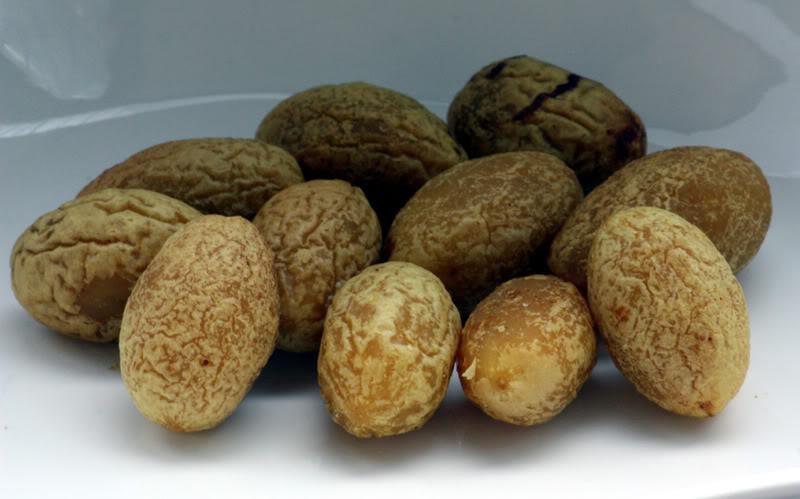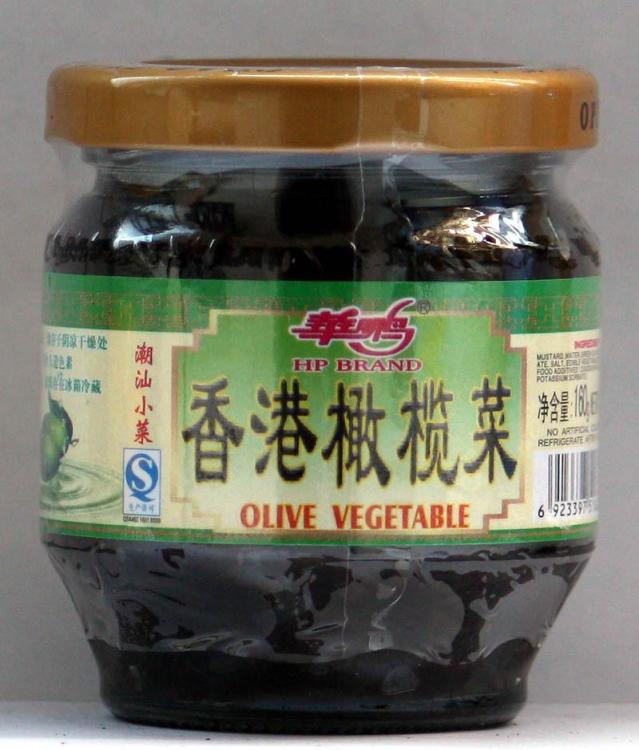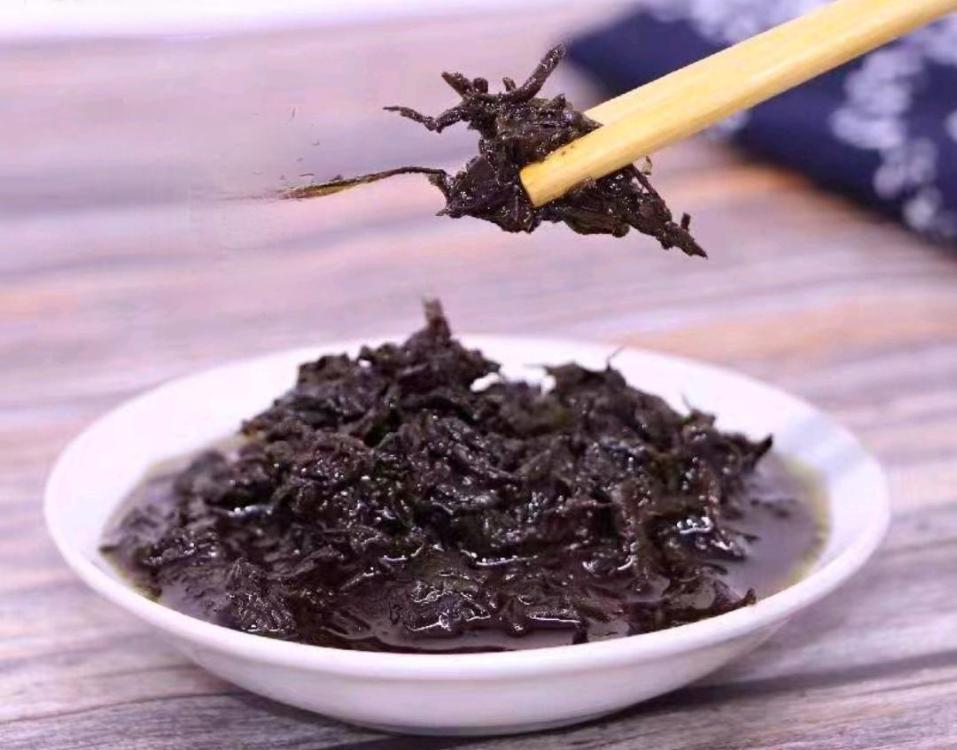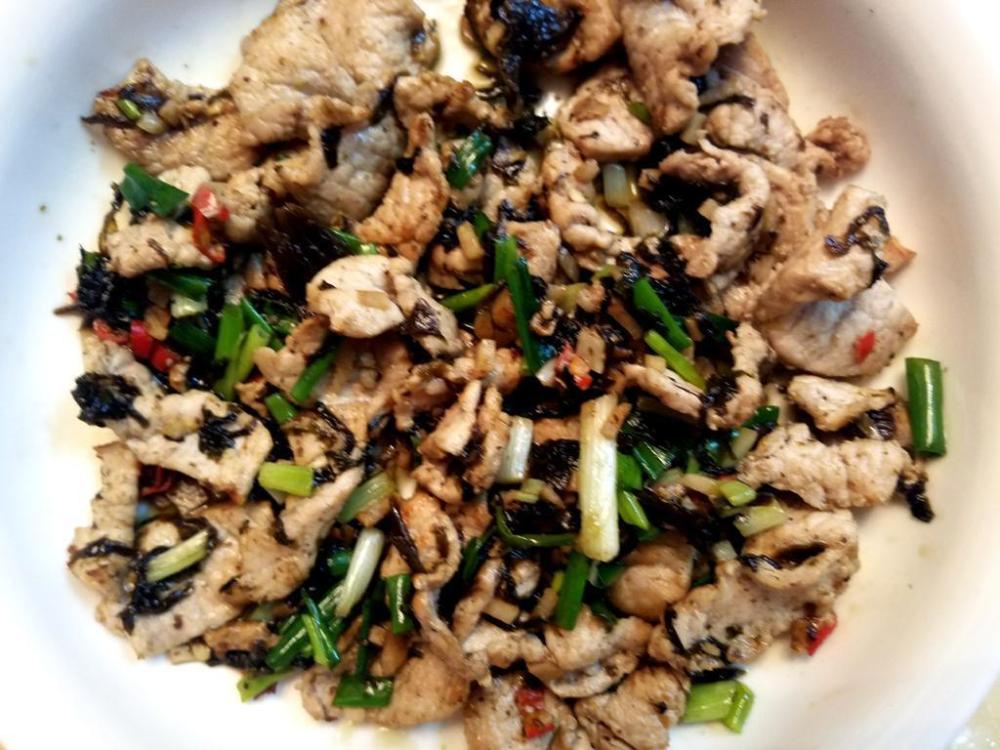I reckon there are olives in my DNA. I love 'em. The first food my granddaughter expressed a pre-vocal liking for was olives. Why, oh why did I move to China, a veritable olive desert? I can buy cheap, dyed low quality Spanish olives, that the Spanish don't want, in jars or cans but I have standards!
So, I was delighted to learn early on that China grows olives, mainly in Fujian province. A delight that was soon shattered.
Chinese olives ain't olives! Not even vaguely related and certainly not even close to tasting like olives.
Chinese olives, S: 橄榄; T: 橄欖 (Mandarin: gǎn lǎn; Cantonese: gaam3 laam2) are Canarium album, whereas European olives are Olea europaea and ne'er the twain shall meet.

Chinese 'olives'
Chinese olives are usually pickled in vinegar or salted and eaten as a snack food. They are also often candied. Occasionally, they are added to hotpots or soups. Bitter, astringent and to my tastes, unpleasant.

Salted Chinese 'olives'
What I don't mind however is S: 橄榄菜; T: 橄欖菜 (gǎn lǎn cǎi), olive vegetable. This is processed from the offending objects and made into a paste sold in jars labeled 'olive vegetable'.
It makes an umami rich addition to stir fries. I sometimes add a little to fried rice or congee.
'Olive vegetable'
It is particularly popular and associated with Chaozhou* cuisine, a sub-branch of Cantonese cuisine with a strong Fujian influence. Popular in Hong Kong, too.
Stir fried pork with olive vegetable
* aka Chiu Chau, Ch'ao Chou, Teochiu, or Teochow.





